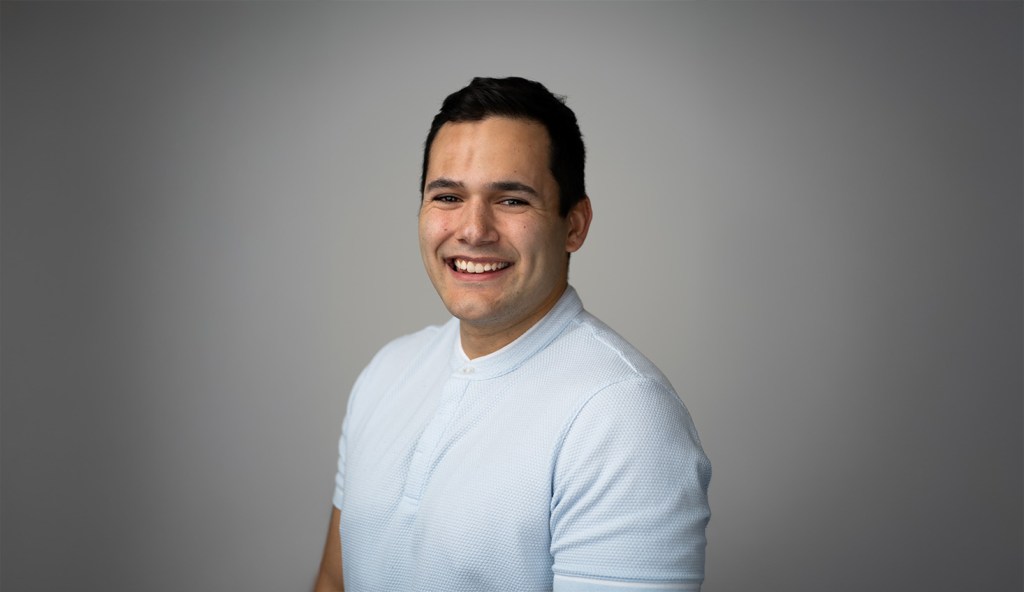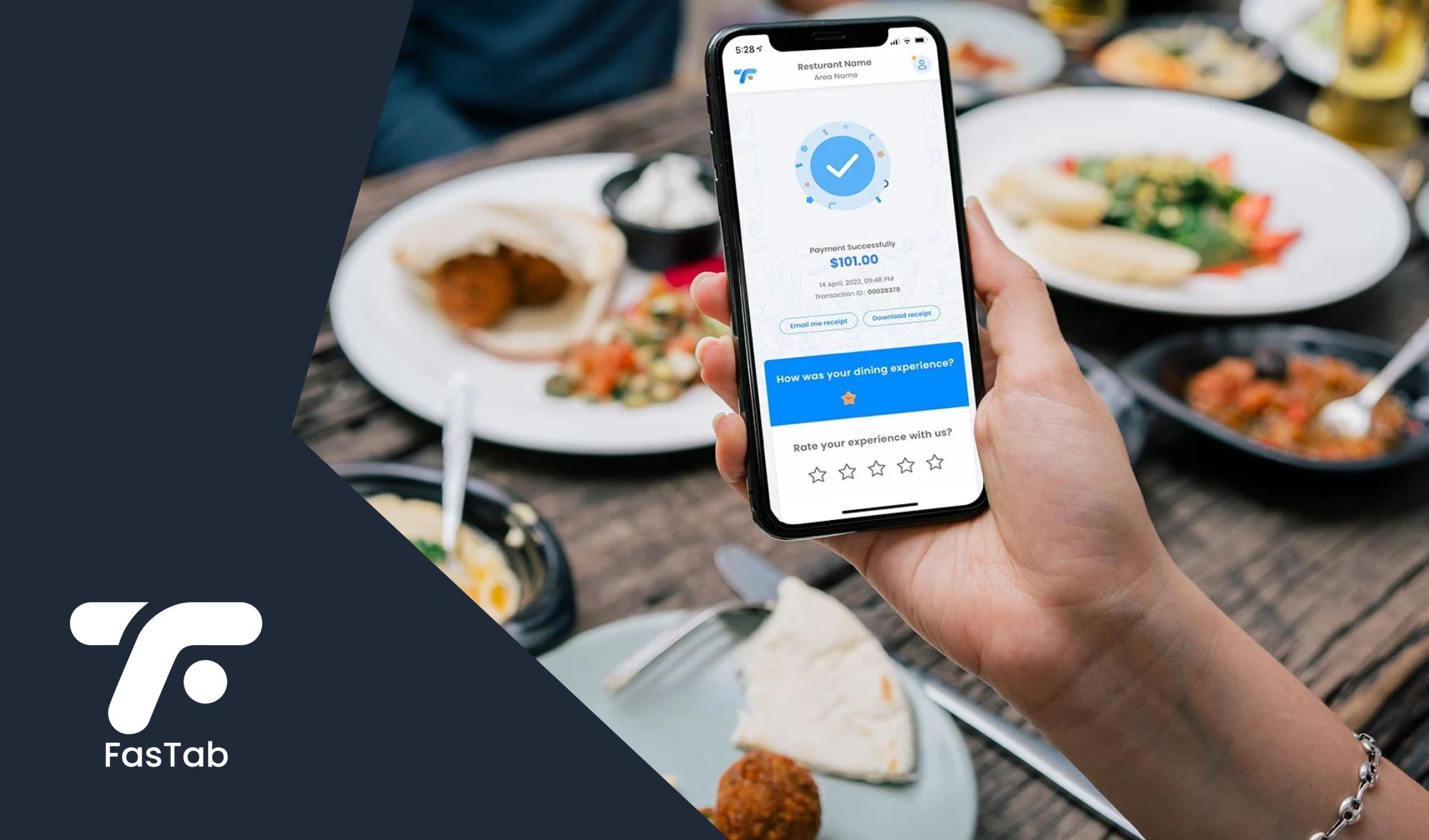FasTab co-founder Zech Noiseux shares practical strategies for scaling from 10 to 100 customers while maintaining strong relationships and keeping acquisition costs low.
The leap from 10 to 100 customers isn’t just about adding more logos to your website— it’s the milestone that transforms your startup from an experiment with potential into a proven business. But how do you make this crucial transition without burning through cash or losing the personal touch that won your first customers?
Enter FasTab, a Manitoba-headquartered SaaS startup that allows restaurant customers to view menus, or split and pay tabs, in under 10 seconds. The company touts their software as “the fastest and easiest way to pay at restaurants.” While the company now counts clients from coast to coast, when co-founder Zech Noiseux and his team hit their first 10 customers, they faced a familiar startup crossroads: scale fast and risk breaking things, or grow too slowly and watch competitors race ahead.
What they discovered instead was a third path that turned their early customers into growth engines while keeping acquisition costs surprisingly low. By building authentic relationships and truly understanding their target customers, FasTab was able to refine their approach and unlock sustainable growth.
In our exclusive interview, Noiseux offers lessons learned and insights for startups seeking to scale efficiently from 10 to 100 customers—and beyond—while maintaining strong customer loyalty.
From personal touch to scaleable service
FasTab’s journey from 10 to 100 customers required its founders to master a delicate balance: maintaining the personal touch that won their first clients while building systems that could scale. In the earliest days, the founders took an extreme hands-on approach, literally moving into their first restaurant partner’s space to ensure everything worked perfectly.
“For that first two months, we were in this restaurant every single day, from open till close in the back corner,” says Noiseux. “Every staff member knew us. Every customer ended up knowing who we were. It was kind of like a joke, of ‘do you guys even go home?'” This intensive presence allowed them to understand every aspect of restaurant operations and refine their product accordingly.
As they expanded, the founders realized they needed to systematize their approach while preserving the human element that restaurants valued. Rather than transitioning to fully automated support, they developed a hybrid model that maintained personal connection at scale. They created direct communication channels for all staff levels—not just owners—and ensured real people were always available to respond.
“AI is the new buzzword. But at the end of the day, humans want to talk to humans when there’s a problem.”
“I’m in technology. I love that AI is the new buzzword,” the co-founder reflects. “But at the end of the day, humans want to talk to a human when there’s a problem. They also want to talk to a human when there’s something exciting happening.”
This philosophy led them to an important realization: unscaleable practices can work longer than most think, provided you build the right processes around them. Instead of rushing to automate everything, FasTab focused on creating systems that allowed them to deliver personalized service efficiently, even as they grew beyond their initial base of 10 restaurants.
Product iteration through customer understanding
FasTab’s growth from 10 to 100 customers was driven by a relentless focus on how restaurants and their guests actually used their product, even when reality didn’t match their initial assumptions. Perhaps the most telling pivot came from their early obsession with digital menus.
“When we first launched FasTab, we really thought there was going to be a huge emphasis on showing the digital menu,” says Noiseux. “We would sit there and see servers bring physical menus to tables, and we would cringe and start to get anxious.” But watching real users revealed a crucial insight: the menu feature wasn’t the key to adoption. The simple solution was changing their table QR codes from “scan to view menu and pay” to just “scan to pay tab”—a small pivot that dramatically improved customer understanding and usage.

FasTab co-founder Zech Noiseux
This pattern of learning through observation shaped their entire approach to product development. Rather than build features based on assumptions, they first solved problems operationally to understand the real needs. If their team spent significant time handling a recurring issue, they evaluated whether a product solution could eliminate those support hours entirely.
The FasTab team also innovated in how they gathered feedback, creating direct communication channels for servers and staff who could spot issues day-to-day, not just restaurant owners. By collecting insights from all levels of restaurant operations, they could identify and fix issues before they became serious enough to lose a customer. This comprehensive approach to customer understanding helped FasTab maintain a remarkable achievement: they haven’t lost a single restaurant partner since launch.
Strategic customer selection and harnessing the power of referrals
FasTab’s path to 100 customers reveals an evolution from taking any willing early adopter to strategically targeting restaurants where they could deliver maximum value. Their initial approach was refreshingly honest: “The joke answer, but also the honest answer, is really being able to put yourself out in front of people and essentially beg at the start,” admits Noiseux.
They earned their first opportunities during the early days of COVID-19 by offering free contact tracing tools to restaurants, asking only for a coffee meeting in return. These conversations helped them understand restaurant pain points and build relationships before their product was even ready. But perhaps most crucially, they had to find partners willing to take a leap of faith on new technology.
As they grew beyond their first 10 customers, their approach became more selective and data-driven. “We started being able to actually go after different businesses and say, ‘Look, we know you’re going to see this type of impact in ROI because we’ve seen it in 10 other locations that look just like your business,'” says Noiseux.
The team was careful to avoid relying too heavily on incentivized referral programs which they felt could undermine the authenticity of recommendations. “Paid referrals are interesting because while they can work, I think a paid referral takes away the actual purpose of a referral, which is, ‘I’m going to tell my friend about you because I really believe in the product’ versus ‘I’m going to tell my friend about you because I’m getting like, $500.’”
Rather than offering monetary incentives for referrals, they built a network through proven value, occasionally surprising referring partners with unexpected thank you gifts. This approach led to higher quality introductions, as restaurant owners naturally connected them with others in their network.
Resource management during growth
Scaling from 10 to 100 customers requires founders to make crucial decisions about where to invest limited resources. When founding FasTab, getting the team structure right proved essential.
“The first hires in a startup are always the most important. They are the ones who are going to help you go from that 10-100 mark and be with you through all of the struggles along the way,” says Noiseux.
Despite budget constraints, Noiseux prioritized market rate compensation: “One thing I always told myself was we weren’t ever going to hire someone for what I thought was a really below market wage. If you can hire at market wage, you can have better expectations for performance.”
Yet, perhaps most challenging, was transitioning customer relationships away from founders. “When you have 10 customers, they all have your phone number and they all want to talk to you. You can’t have everyone call you all the time, or else your phone’s ringing off the hook,” says Noiseux.
This delicate handoff requires finding people who embody your values. “Nine times out of 10, we hire a team member because of energy and who they are, not because of qualifications,” Noiseux says.
The third path forward
The journey from 10 to 100 customers taught FasTab valuable lessons about sustainable growth: maintain authentic human connections, listen closely to users at all levels, be selective about partnerships, and hire for cultural fit. By balancing personal service with scaleable systems, FasTab built a loyal customer base without sacrificing quality.
As Noiseux demonstrates, the path to growth isn’t about choosing between scaling fast or growing slowly—it’s about finding that third path where customer relationships become your most powerful engine for expansion.
If you would like to learn more about FasTab, visit FasTabpayments.com
RBCx offers support to startups in all stages of growth, backing some of Canada’s most daring tech companies and idea generators. We turn our experience, networks, and capital into your competitive advantage to help you scale and make a meaningful impact on the world. Speak with an RBCx Advisor to learn more about how we can help your business grow.
